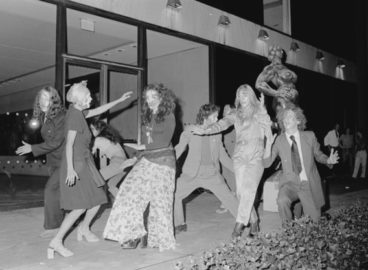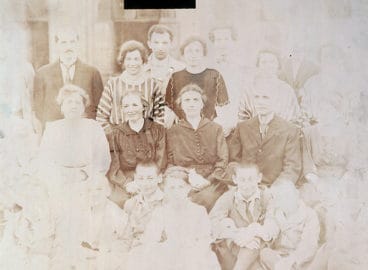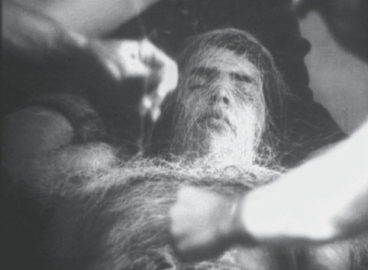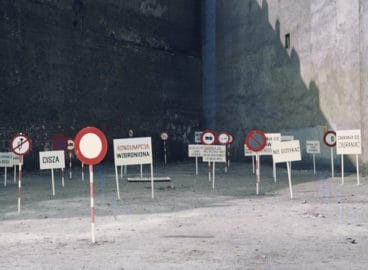Three Sunny Days (3SD)
Authors Ján Budaj
Date 1981
Publication samizdat publication
Language Slovak


Foreword
A brief explanation of the event that took place in the last days of May 1980 in the Medical Garden in Bratislava, who was behind it, and why and how we wanted to do it.
The idea for the event “Three Sunny Days” (3SD) was formed in the autumn of 1979 among nonprofessional theater performers and artists who were concerned with process- and action-based art.
It followed similar events that had taken place in the streets and squares of the historical center of Bratislava in May 1978 and 1979. These were experiments in street theater, organized under the auspices of the pantomime theater group Labyrinth. Theater Labyrinth was also to take charge of organizing the 3SD event.
Labyrinth was comprised of young people keen to explore nonconventional theater forms, but unlike other contemporaneous underground groups, they didn’t suffer from disillusionment. Those who experienced these times know exactly what I am talking about, but for those who did not, it is hard to explain in brief the state of mind of the young people in the 1970s who were not willing to conform or compromise.
Apart from the above-mentioned community, 3SD also counted on the participation of so-called professional artists, and among them, especially those who had no place in the state–sanctioned art spaces.
A new element in the Slovak cultural context was the connection of these art groups with ecologists. The ecological spirit not only influenced the selection of the site and the projects of certain participants but also the overall identity of the 3SD event.
The selection of participants and the types of presentations programmed were driven by the overall aim of 3SD, which was to create a site of contact:
A site of contact between the public and the art production of lesser-known, nonconformist artists.
A site of contact between the various art groups, but also between artists interested in process based art and theater professionals, between artists interested in process-based art and musicians, and between all of the above and ecologists.
A site of contact for the public with the public (that is, an attempt to create an authentic public event, which had been and still is very rare), and also for the public to confront various issues, including ecological ones. The organizers were aware of the gap between the public and the program to be presented in the Medical Garden. This was due to the lack of education, to skepticism, and to a general mistrust—issues embedded in the sociopolitical status quo of the 1970s. The only means we had to fight against this was our own efforts—and our plain will to confront it.
Our event wasn’t supported by the media, or by any of the state cultural institutions or governing bodies that were there to help with the revitalization of cultural life after the difficult and complicated Normalization period.1Translator’s note: A period that saw the restoration of Communist rule following the defeat of the Prague Spring of 1968 and lasted through the 1970s and 1980s, until the Velvet Revolution of 1989 finally restored a democratic political system in Czechoslovakia.
Thus, 3SD happened despite the conditions of its time, rather than as a part of any much-needed change to the very rigid approach prevalent in the cultural and social life in general.
Nevertheless, we hoped that the audience would respond to the authentic and personal engagement of the team behind 3SD.
Throughout the past years, we had learned that hostility and mistrust can be turned on their heads in a moment. It had been proved that people are always, subconsciously, waiting for a moment of activation, for an “invigorating” event. They need space to congregate. And they don’t even require that something special be happening there. But there needs to be a space that allows for possibilities. In some towns, a square can be a site for this to happen, or elsewhere it may be by the base of a memorial . . .
The aim to create a public event, a public space, a site of contact—and the obstacles and barriers experienced by the organizers (financial, bureaucratic)—eventually shaped the form of 3SD into an event that could be realized and still remain “ours.” It seemed that in the jumble of bureaucratic regulations, there were routes that would allow us to make it happen. (As the state body responsible for investigating the 3SD event later stated: There was a loophole in the organizational structure of youth and club associations that allowed space for informal initiatives, a space without overarching state control).
The program, be it theater or music, or ecological presentations, was to take place from 10 a.m. to 9 p.m. We decided to run the program on Thursday, Friday, and Saturday, and to aim for a demographically and socially diverse audience.
Indeed, apart from the usual park goers, we wanted to attract the wider public.
We were going to promote the event through press articles (in Večerník)2Translator’s note: Večerník was a popular, apolitical daily paper, distributed at 4 p.m. and billboards and on notices on the Medical Garden gates and in front of the V-club in SNP square. We printed leaflets for the actors in participating theaters to give out in the streets. This was all in line with legal regulations and approved by the management of the V-club—which was the home of Theater Labyrinth. To be on the safe side, we secured written approval from the cultural department of the city council.
A fortnight before the opening of 3SD, many of the activities had already been prepared and organized and we had obtained the necessary authorization and permits. We had printed the 3SD promo materials and leaflet—which had been approved and given an official print registration number.
However, as you may know, the 3SD did not take place. After it was banned, the event became shrouded in an atmosphere of hysteria, though the true reasons for its cancellation are not clear, even to this day. We were only aware of the consequences. These included confiscation and destruction of the complete print run of the 3SD leaflet, a ban on Theater Labyrinth, a ban on the V-club and the firing of its professional staff, the interrogation of the organizers behind 3SD, attempts to professionally ostracize the art director of Theater Labyrinth, and so on and so forth.
Today, some would say that this should have been expected. And for sure, it should have. But I still think that this event/nonevent has given us something special, the feeling that we had at least attempted normality.
And one should not forget that the idea of 3SD came about in a slightly different atmosphere, following similar annual events that had taken place in the past two years in much busier parts of the old town. When we started planning and preparation for 3SD, we had no idea that within a few weeks, there would be heightened international tensions (as a result of the Soviet invasion of Afghanistan in December 1979) and that this would have a negative impact on nonconformist artists working within the country. We didn’t know that the spring of 1980 would be marked by attacks on the very few aspects of cultural life in which some signs of authenticity had cropped up. What followed was the case of “the three formalists”3Translator’s note: This refers to the exhibition of work by the artists Daniel Fischer, Igor Minárik, and Marián Mudroch, which closed down soon after its opening at the cultural center on Vajnorská Street. on Vajnorská Street, the banning of several films (by Dušan Hanák and by Juraj Jakubisko), and so on.
Therefore, in the following chapters, I will, alongside excerpts from descriptions of the projects and actions for 3SD, analyze the wider cultural context of the spring of 1980. I began work on this publication a year after the event/nonevent due to various personal and external reasons and will note how the changes caused by the above-mentioned events have affected the artists and other collaborators of 3SD, both in terms of their opinions and of their art production. In some cases, this will be supported by interviews, and in others, through examples of developments or shifts in the participants’ art production between 1980 and 1981.
Rather than as a chronicler of this nonevent, I would like to serve as your guide through the cross section of the cultural situation between 1980 and 1981. My perspective may be subjective, but hopefully it will not be boring.



Translated by Zuzana Flaskova.
- 1Translator’s note: A period that saw the restoration of Communist rule following the defeat of the Prague Spring of 1968 and lasted through the 1970s and 1980s, until the Velvet Revolution of 1989 finally restored a democratic political system in Czechoslovakia.
- 2Translator’s note: Večerník was a popular, apolitical daily paper, distributed at 4 p.m.
- 3Translator’s note: This refers to the exhibition of work by the artists Daniel Fischer, Igor Minárik, and Marián Mudroch, which closed down soon after its opening at the cultural center on Vajnorská Street.



